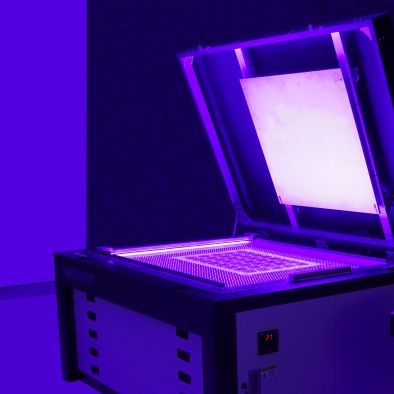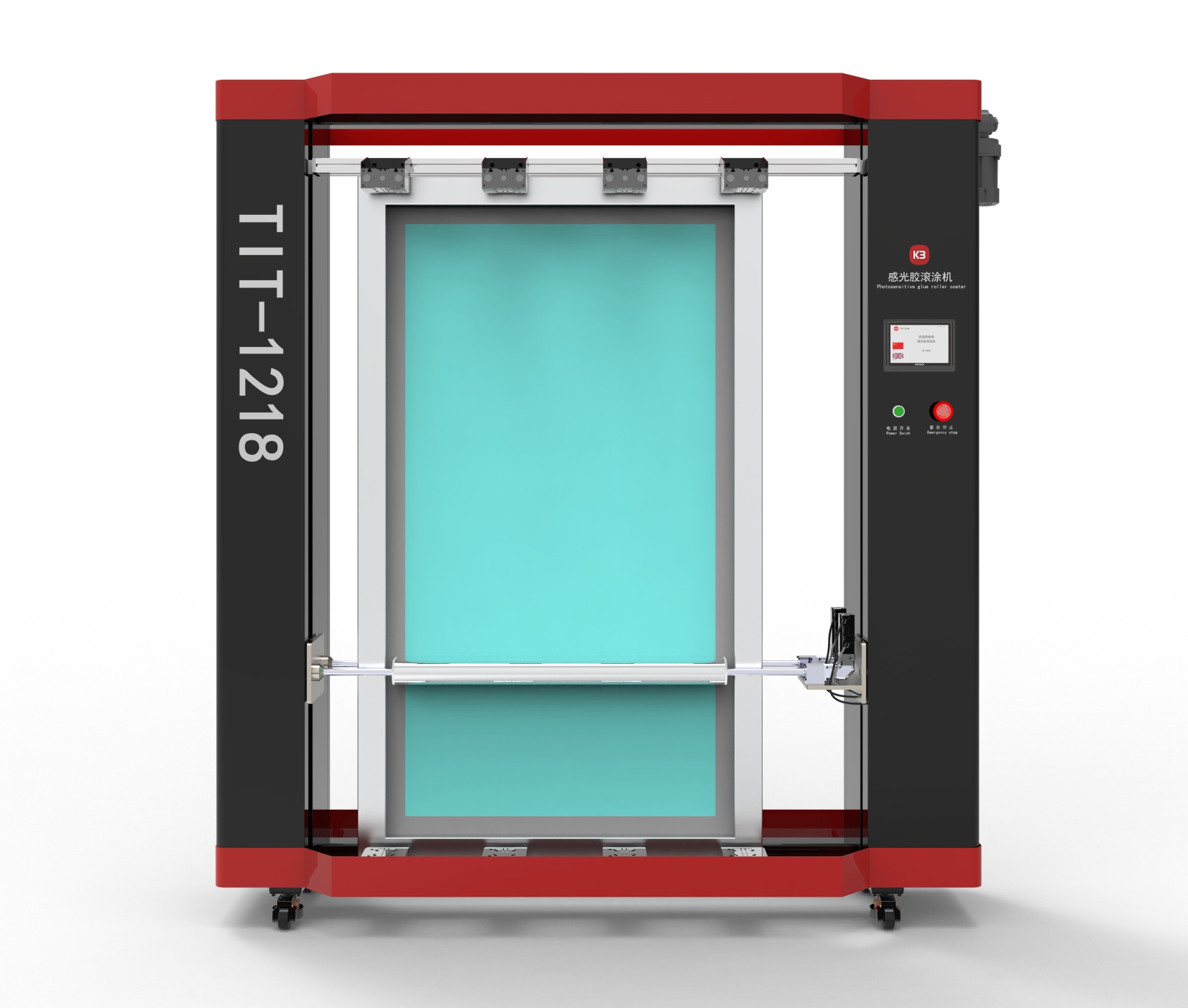In the vast world of the printing industry, the screen is the core tool of the printing process, and its performance and quality are directly related to the final effect of the printed product. With the continuous advancement of printing technology and the increasingly fierce market competition, how to improve printing quality has become the focus of printing companies. In this context, screen reinforcement technology and the selection of photosensitive paste are critical. They are not only related to the durability and stability of the screen but also directly affect the printed product's color reproduction, clarity, and overall texture.
As the name suggests, screen reinforcement technology strengthens and enhances the screen through a series of technical means to improve its durability and printing effect. This technology involves multiple links, including exposure and drying of the screen, mixing and coating, chemical reaction and reinforcement, and washing and drying. Each link requires a delicate operation to ensure that the screen maintains stability and consistency during printing. Through the screen strengthening technology, not only can the service life of the screen be extended, but also the printing accuracy and color reproduction of the printed products can be improved, bringing higher economic benefits and market competitiveness to printing companies.
As an indispensable material in screen printing, the selection and application of photosensitive paste are also crucial. The quality of photosensitive paste directly affects the plate-making effect of the screen and the final quality of the printed products. Many types of photosensitive pastes are on the market, including water- and water-oil-based. Different types of photosensitive pastes have different characteristics and applicable scenarios. Therefore, when selecting photosensitive pastes, selecting according to the specific printing environment and requirements is necessary. At the same time, in the application process of photosensitive paste, critical steps such as exposure time and development methods must be paid attention to ensure the quality of screen plate making and the final effect of printed products.
In summary, screen strengthening technology and the selection of photosensitive paste are vital links to improve printing quality. By reasonably selecting and applying these technologies, not only can the durability and stability of the screen be improved, but the printing accuracy and color reproduction of printed products can also be improved, bringing higher economic benefits and market competitiveness to printing companies. In the following article, we will further explore these technologies' specific details and application methods.

In the printing industry, screens are the core tools in the printing process, and their quality and performance directly determine the final effect of the printed product. However, with the increase in the number of prints and the passage of time, screens often suffer from problems such as wear and deformation, resulting in a decline in printing quality. To solve this problem, screen reinforcement technology came into being and became one of the key technologies to improve printing quality.
Screen reinforcement technology is a technology that reinforces and enhances screens by physical or chemical means. It aims to improve screens' durability, stability, and printing effect. Specifically, screen reinforcement technology includes multiple steps: exposure and drying, blending and coating, chemical reaction and reinforcement, and washing and drying. These steps require delicate operations to ensure that the screen maintains stable performance and consistent printing effects during printing.
Exposure and drying are the first steps of screen reinforcement technology. By precisely controlling the exposure time and temperature, the photosensitive material forms a stable image on the screen. Subsequently, after drying, excess water and solvents are removed to make the image more solid.
The next step is blending and coating. According to the printing requirements and the characteristics of the stencil, select the appropriate reinforcement material and coating method. By evenly coating the reinforcement material, a solid protective layer is formed on the surface of the stencil to improve its durability and stability.
Then comes the chemical reaction and reinforcement step. The reinforcement material reacts chemically with the surface of the stencil to form a tighter bond. This step not only enhances the mechanical strength of the stencil but also improves its chemical corrosion resistance.
Finally, there is the rinsing and drying process. By rinsing, excess reinforcement materials and unreacted chemicals are removed to ensure that the surface of the stencil is clean and tidy. Subsequently, the stencil is dried to restore the stencil to a dry state for subsequent printing operations.
Through the stencil reinforcement technology, not only can the service life of the stencil be extended, but the replacement frequency and cost investment can be reduced; it can also improve the printing accuracy and color reproduction of the printed matter, making the printed matter clearer, brighter, and more realistic. Therefore, the widespread application of stencil reinforcement technology in the printing industry is of great significance to improving printing quality.

In the printing process, the selection and application of photosensitive paste are also crucial. As a critical material in screen printing, photosensitive paste's quality and performance directly affect the screen's plate-making effect and the final quality of the printed product.
The selection of photosensitive paste needs to be based on specific printing needs and material properties. Different printing materials, processes, and requirements require different photosensitive paste types. For example, for high-precision printing, it is necessary to choose photosensitive paste with high resolution and good stability; for large-area printing, it is essential to choose photosensitive paste with wear and solvent resistance. Therefore, when selecting photosensitive paste, printing companies must make comprehensive considerations based on their conditions and choose the photosensitive paste that best suits their needs.
The application of photosensitive paste also requires delicate operation. When applying photosensitive paste, it is necessary to ensure uniform coating and moderate thickness to avoid problems such as bubbles and impurities. At the same time, in critical steps such as exposure and development, it is also necessary to strictly control parameters such as time and temperature to ensure that the photosensitive paste can give full play to its performance and form high-quality screen images.
In addition, the storage and transportation of photosensitive paste also need attention. Photosensitive paste should be stored in a cool, dry, and ventilated place, avoiding direct sunlight and high temperatures. During transportation, it is also necessary to prevent collisions, extrusion, and other external forces to ensure that the quality and performance of the photosensitive paste are not affected.
In short, the selection and application of photosensitive paste is integral to the printing process. Only by selecting the suitable photosensitive paste and carefully operating its application process can the quality of screen plate making and the final effect of the printed product be ensured.
With the advancement of science and technology and the continuous changes in the market, printing technology is also constantly innovating and developing. From traditional offset printing, gravure printing, letterpress printing to modern digital printing, inkjet printing, etc., technological innovation has improved printing efficiency and greatly enriched the presentation of printed products.
Regarding technological innovation, intelligence, and automation have become essential development directions for the printing industry. By introducing advanced automation equipment and intelligent control systems, the automated operation and intelligent management of the printing process can be realized, labor costs can be reduced, and production efficiency can be improved. At the same time, smart technology can also monitor and analyze the printing process in real-time, helping printing companies to grasp the production situation better and optimize the production process.
Regarding material innovation, the application of new environmentally friendly materials has gradually become popular. These materials not only have good printing performance but also have the characteristics of environmental protection and recyclability, which are in line with the sustainable development concept of modern society. Printing companies can reduce pollution and environmental damage by using these new materials while ensuring printing quality.
In addition, with the development of digitalization and networking, the printing industry is also facing new opportunities and challenges. Digital technology makes the production of printed products more convenient and faster, while networking makes the dissemination of printed products more extensive and rapid. Therefore, printing companies need to keep up with the pace of the times and constantly learn and master new technologies and applications to adapt to market changes and meet customer needs.
In short, the continuous innovation and development of printing technology has brought new opportunities and challenges to the printing industry. Printing companies must constantly learn and master new technologies and applications to adapt to market changes and meet customer needs while paying attention to environmental protection and sustainable development and contributing to the industry's future growth.
We can draw several key conclusions after the above-detailed introduction of strengthening the screen and using the photosensitive paste. First of all, the strengthening process of the screen not only involves the uniform coating of the photosensitive paste and the chemical reaction of the hardener but also requires attention to detail operations, such as using an air gun to blow through the mesh to ensure the quality of plate making. Secondly, the selection of photosensitive paste is crucial to the printing effect, especially for different printing environments and requirements, such as humid environments or high-precision printing needs; it is necessary to select the appropriate type of photosensitive paste, such as water-oil photosensitive paste or photosensitive paste with high solid content and low viscosity.
In addition, the exposure and development process are also essential links that affect the quality of the stencil. The selection of the exposure method, the control of exposure time, and ensuring that there is no residual photosensitive paste in the mesh during the development process are all essential steps to ensure the quality of the stencil. At the same time, attention should be paid to temperature control during operation to avoid excessive temperature causing a thermal cross-linking reaction of the photosensitive paste, which affects the printing effect.
In summary, the strengthening of the stencil and the use of the photosensitive paste is a complex and delicate process that requires careful consideration of multiple factors, including the selection of photosensitive paste, the control of the exposure and development process, and detailed operations. High-quality stencils can be produced to meet different printing needs only by mastering these key technologies and precautions.
Here, you can submit your questions and needs online, we will contact you as soon as possible or direct online reply!
If a response is urgently needed, please call 00864009969505
 WeChat
WeChat